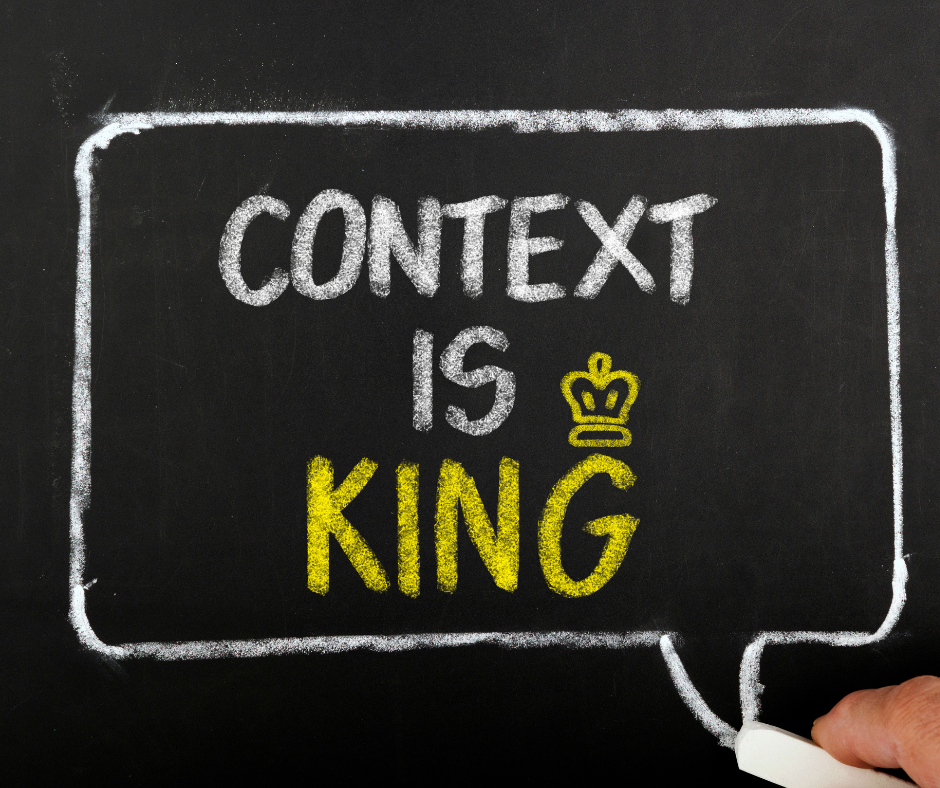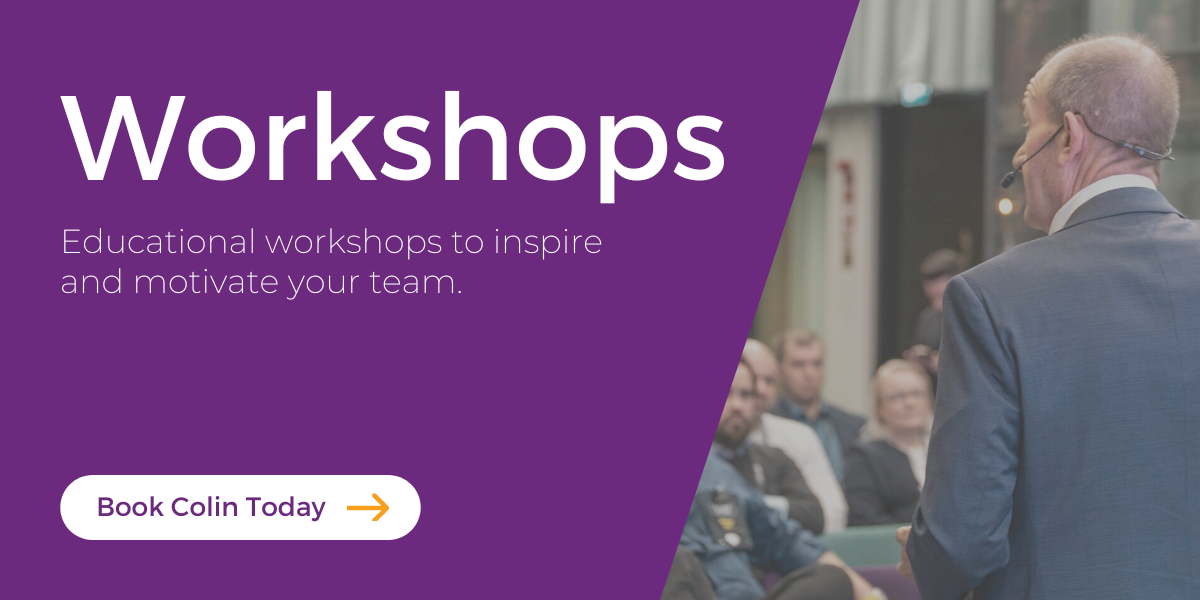Organizations don’t think enough about the context in which a customer enters the experience. Most believe that every customer is the same. However, understanding the context in which your customer has your experience is critical to your customer strategy.
Context is everywhere. When I started working in Customer Experience in 2001, people hadn’t thought about the experience economy, the customer experience, or anything else in this area. However, now Customer Experience is the context through which people look at business.
We talk about emotions and the behavioral sciences in a Customer Experience. It’s our lens, our context. We design our content through this lens. It’s our context. Depending upon the customer’s context, you should create your experience around that.
Watch Colin talking about this on YouTube:
Subscribe to our YouTube channel here to see all the latest videos!
For example, we were working for one of the cellular phone companies in the States. It was part of the project where we mapped their lost and stolen processes. We discovered that they treated customers that had lost their phone or had it stolen the same way when they called in. It was a mistake to ignore the context.
Consider how you would feel if you had lost your phone in the back of a taxi. Probably stupid, right?
Now think about how you might feel if your phone was stolen. Probably angry, right? Scared, maybe? Whatever you felt was likely much different than how you felt leaving it in a cab.
However, the company was treating both of these customers the same. They were asking for the account number right off the bat. We convinced them to determine what happened first and ensure that they were okay, and if the phone was stolen, the customer was safe. This change had an excellent effect on their experience design and outcomes.
Therefore, segmentation is one of the critical inputs for anticipating context. People bring different perspectives and expectations to your experience. While other things can also determine context beyond segmentation, it’s an excellent place to start.

The Context of Your Organization Plays a Role, Too
When you’re within the organization, it isn’t straightforward, either. Senior people have a context, a way things have always been done. Suppose you come in with a new lens and context framed around Customer Experience. Management may not be able to understand your context. They see changing the experience as something that will cost them money. They don’t see the benefits because they don’t have your context.
The designers of the Lost and Stolen call center had a context. What’s more, the senior management had one, too. The senior managers thought customers would be ready to present their account numbers upon getting through the call center queue. They were looking at the interaction from an operational lens. The quicker the call center employee had the account number, the faster they could resolve the issue and have their employee process another call.
In any given experience, there are multiple layers of context. These layers can create problems because different people view the same experience differently. It can lead to confusion of priorities, like asking for an account number shortly after someone has been mugged.
Therefore, having diversity in the crew that designs your experience is a good idea. Instead of having everybody coming in with one particular perspective, you have different views represented. It makes it more likely that you won’t miss as many things. Of course, that assumes that decision-makers don’t ignore diverse perspectives. You don’t have diversity because you ignore all kinds of inputs.
Diversity can be a tremendous strength for an organization. But not if it is addressed improperly. If people who see the experience in different ways feel confrontational, they might argue that their perspective is right instead of trying to learn from the other points of view.

I deal with this problem often in my consultative role. I must first understand the context of why the experience is what it is. Then, I need to change that context. So, I acknowledge how they see the world through this lens, and that’s the context that created the experience they want to change. Then, I show them the experience through my lens, explaining why emotions matter and why you need to address the various customer segments in a specific way that differs from how you treat other segments of customers.
For example, when we do the voice of customer work, we bring the customer’s context to the design experience. We are adding their perspective. Our job is to get that insight into the organization to improve the experience.
Perception is Real, But Maybe Not Reality
There is another critical part of this context equation, perception. So, perception adds another consideration because there is a difference between the actual and perceived contexts. By that, I mean that sometimes what customers think is happening isn’t happening, and it’s their fault.
Let me explain using a personal (if embarrassing) example. When I record my podcast, I use a microphone that has an app. We had a scheduled recording coming up, but I couldn’t get the microphone to work. I was convinced there was a problem with the app and called the support people to work it out. After about 45 minutes into the call with support, I noticed I had muted the microphone, which was the problem.
Now, my perception was that the microphone’s app had a bug, so the context of my experience was influenced by feeling hassled to fix something that was supposed to work but wasn’t through no fault of my own. But, the reality was that there was a bug with the operator, a big Wally that muted his microphone and forgot about it. So, what I thought was happening wasn’t, and the mistake was mine.
Moreover, it reminds me of how irritated I feel when I am troubleshooting with my cable company about my internet service, and they ask if I rebooted the router. I think, “Who do you think you are talking to, a bloody idiot?” But, of course, if the call center support team had asked me about my microphone’s mute feature, I would have had 45 minutes of my life back.
So, What Should You Do About All This?
One key takeaway here is that it is critical to understand customers’ context. When you do, you have the opportunity to provide a personalized experience. Showing customers that you know them at a much deeper level also helps you be proactive, which many of you might remember is where I think the next competitive battleground will be for organizations.
Walking the experience as if you were a customer is essential to get this contextual understanding. For example, suppose I design TVs, and my product assortment includes different levels of features (and prices) intended to nudge people toward a particular model. If my experience design only uses my TVs as a display in a retail store, I can control how the arrangement will inspire the customer behavior I want. However, my products are not the only ones on display, so the imagined context doesn’t exist. To drive the customer behavior I want, I need to include the other manufacturer’s models in my design to account for the proper retail context for the customer’s decision-making. Unless I have that perspective, I will not optimize the Customer Experience as I should.
Therefore, I would advise analyzing data but realizing that data is not enough. Two people studying the same data can draw two very different conclusions about it. Why? The conclusions differ because the context of the analysis varies.
So, to understand our customers and customer experience, gather all the data you can about that experience. But then also understand your customers’ perspectives as they evaluate them. Explore the physical and emotional influences that can occur and determine how those might affect your customer’s perception.

Also, get as close to the mental model of your customer as you can. Mimic their experience if you want to understand them. Walk the experience as a customer if you can.
In addition, it is essential to realize that perception matters but that customers can have the wrong one. Therefore, consider designing your experience to move them to see reality gently.
Context is essential for your experiences, and too many organizations don’t know it. So, ensure you aren’t one of them by understanding your customer’s context and designing one that anticipates their needs.
Colin has conducted numerous educational workshops to inspire and motivate your team. He prides himself on making this fun, humorous, and practical. Speak to Colin and find out more. Click here!




